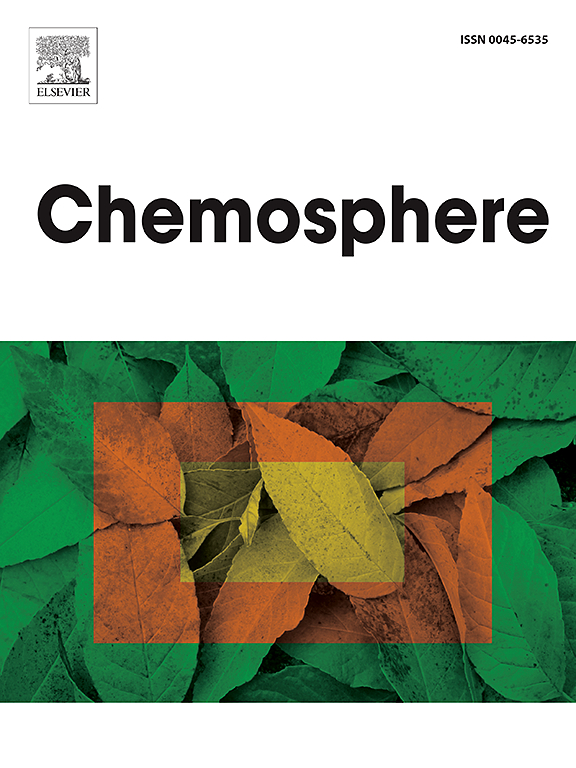Enhanced ammonia nitrogen filtration using NaOH-activated Manihot utilissima peel carbon: Application in recirculating aquaculture systems for Nile tilapia
IF 8.1
2区 环境科学与生态学
Q1 ENVIRONMENTAL SCIENCES
引用次数: 0
Abstract
This study investigates the potential of NaOH-activated carbon from Manihot utilissima peels as an ammonia nitrogen filter in Recirculating Aquaculture Systems (RAS) for Nile tilapia (Oreochromis niloticus). Carbon was synthesized via carbonization at 300 °C and chemical activation with NaOH, resulting in a highly porous structure with a surface area of 1725 m2/g. By Week 4, ammonia concentrations decreased significantly from 12.30 ± 0.18 μg g−1 in the control to 7.46 ± 0.06 μg g−1 in the 20 g treatment (P5), accompanied by lower glutamine synthetase (GSase) activity (398.33 ± 2.89 to 258.33 ± 10.41 μmol mg−1 h−1). Ammonia excretion rates (JAmm) ranged from 2.23 ± 0.15 mmol g−1 h−1 in P1 to 3.07 ± 0.12 mmol g−1 h−1 in P5 under fed conditions and decreased during fasting. Growth performance improved, with the specific growth rate (SGR) increasing from 1.61 ± 0.22 %/day to 3.59 ± 0.03 %/day, feed conversion ratio (FCR) improving from 1.79 ± 0.26 to 0.75 ± 0.03, and 100 % survival in P5. These results highlight the efficacy of cassava peel-derived activated carbon as a sustainable filtration material for enhancing water quality and productivity in RAS aquaculture.

naoh活化manhot utilissima peel炭强化氨氮过滤:在尼罗罗非鱼循环水养殖系统中的应用
本研究探讨了马尼特罗非鱼皮naoh活性炭在尼罗罗非鱼循环水养殖系统(RAS)中作为氨氮过滤器的潜力。碳经300℃炭化和NaOH化学活化合成,得到表面积为1725 m2/g的高孔隙结构。第4周,氨浓度从对照组的12.30±0.18 μg−1显著下降至20 g处理组(P5)的7.46±0.06 μg−1,谷氨酰胺合成酶(GSase)活性降低(398.33±2.89至258.33±10.41 μmol mg−1 h−1)。在饲喂条件下,P1的氨排泄率(JAmm)为2.23±0.15 mmol g−1 h−1,P5为3.07±0.12 mmol g−1 h−1,空腹时下降。生长性能得到改善,特定生长率(SGR)从1.61±0.22% /d提高到3.59±0.03% /d,饲料系数(FCR)从1.79±0.26提高到0.75±0.03,存活率为100%。这些结果突出了木薯皮衍生活性炭作为一种可持续过滤材料在RAS水产养殖中提高水质和生产力的功效。
本文章由计算机程序翻译,如有差异,请以英文原文为准。
求助全文
约1分钟内获得全文
求助全文
来源期刊

Chemosphere
环境科学-环境科学
CiteScore
15.80
自引率
8.00%
发文量
4975
审稿时长
3.4 months
期刊介绍:
Chemosphere, being an international multidisciplinary journal, is dedicated to publishing original communications and review articles on chemicals in the environment. The scope covers a wide range of topics, including the identification, quantification, behavior, fate, toxicology, treatment, and remediation of chemicals in the bio-, hydro-, litho-, and atmosphere, ensuring the broad dissemination of research in this field.
 求助内容:
求助内容: 应助结果提醒方式:
应助结果提醒方式:


